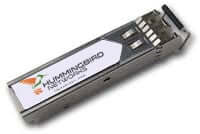3 Reasons To Purchase Cisco SFP-GE-S Optics
Like most areas of electronics, the networking world is full of components. These little guys are necessities, especially when they allow you to make a minor upgrade to an existing syste m without having to buy major new hardware. Items like optics and transceivers can save you a lot of money in the long run.
m without having to buy major new hardware. Items like optics and transceivers can save you a lot of money in the long run.
The SFP-GE-S is a small form factor transceiver built specifically for bridging a gigabit fiber optic connection and your existing server system. These exist to address a very simple problem: how do you build a server that can be multi-functional when there are literally dozens of different ports and connection types on the market?
{{cta('624817fc-751b-4570-a22a-9cba02ec563a')}}
The answer is components like the SFP-GE-S transceiver, which expand the functionality of your switches to include ports they may not have had programmed when they shipped.
Three Reasons You May Need the SFP-GE-S{{cta('524d39af-7750-4a42-90fc-0da39ef8fa5c','justifyleft')}}
First, just to pause to explain the terminology being used. The SFP in the component name is the standard abbreviation for Small Form-factor Pluggable, distinguishing it from the older and larger gigabit interface converters that were common in the 1990s. GE means it supports Gigabit Ethernet, and the S indicates it uses the fiber optic SX standard.
Now, on to the benefits!
Bring Fiber To Your Office
The SFP-GE-S, specifically, is a transceiver for bringing fiber optic Ethernet connections to your network. This component adheres to the 1000BASE-SX standard, with support for 850nm near infrared fiber optic networks.
Fiber optics remain the best and fastest method of transmitting data over wires, although it's not the cheapest method. Fiber optic cables can transmit light for miles with virtually no signal degradation, unlike more traditional cables which become susceptible to interference in a hundred feet or less. Fiber optics are currently the main cabling of choice for large businesses looking to have the fastest possible network connections.
Plus, if you're using copper wire cabling in a large complex, moving to a fiber system may be a necessity. You can't have more than 328 feet (100 meters) of copper wire before interference begins to seriously disrupt the data flow. Fiber gets around this 100m barrier, and this transceiver is what allows the fiber connection to still talk to your network.
 Cisco Compatibility
Cisco Compatibility
A lot of you may already have some Cisco hardware in your office. The good news is that our SFP-GE-S transceivers are fully Cisco-compatible. Since SFP transceivers are standardized, most Cisco routers, as well as some other brands, are able to automatically set up and use one when it's inserted into the server.
Like we said above, this means you can make a major upgrade to your hardware while only paying for a single component.
{{cta('19d48406-7476-4c18-955e-c8d3940bdb63','justifyright')}}
Hot-Swappable
The really cool thing about SFP transceivers is that they're truly hot-
swappable, like USB devices. There's no need to reboot or even reconfigure your server to use one. You simply slide it into place, and within moments, the network will recognize the port. In fact, also like USB devices, they can be transitioned in and out of your network whenever needed. If your connection type changes, just a 30-second component swap is all it takes.
So, if your office has recently upgraded to fiber optic connections – or if you're simply looking into them – you may want to check and see if your switch supports SFP transceiver modules. Thanks to their low cost, tiny form factor, and cross-compatibility, it's a small purchase that could save you a lot of money.
As always, if you have questions about your network setup or which components are compatible with your existing systems, contact us with your concerns and we'll be happy to address them!
